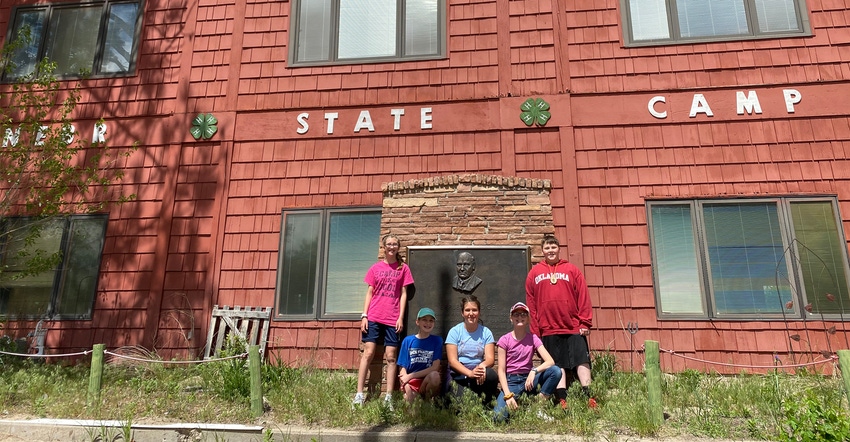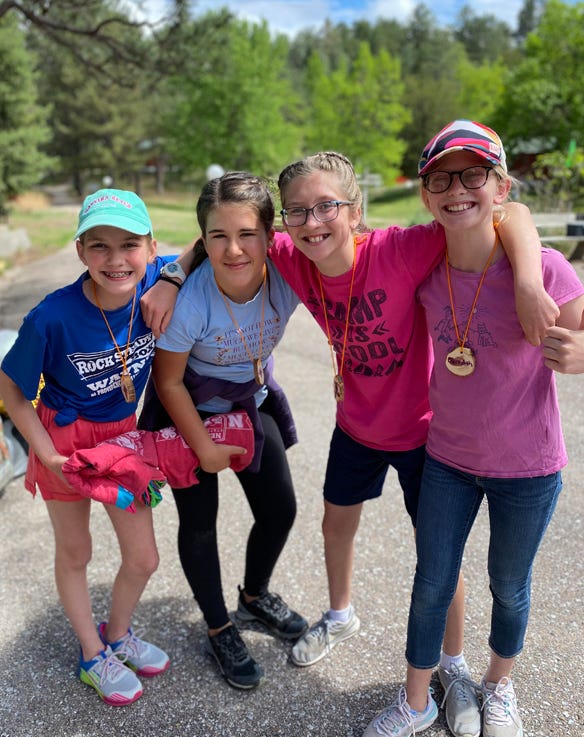
Christi Berns practically grew up at Nebraska State 4-H Camp in Halsey. Her father, Don Siffring, was a Nebraska Extension district 4-H specialist in North Platte and managed the State 4-H Camp — so in her youth, she became a camp counselor on the local level, then served as a head counselor and eventually worked as camp staff for a couple of summers in the 1980s while she was attending college at the University of Nebraska.
Berns was among an estimated 30,000 youth campers and counselors to attend the 4-H Camp located at the Bessey Ranger District of the Nebraska National Forest since it was dedicated in 1963, nearly 60 years ago.
Destroyed by fire
But the camp — except for a staff house — is in ashes now, at the hands of what is called the Bovee Fire, a wildfire that started on the afternoon of Oct. 1 and quickly scorched through nearly 19,000 acres of forest and grassland. A portion of Highway 2 between Dunning and Thedford was shut down for a time, and the village of Halsey was evacuated.
As of earlier this week, the fire had only been 30% contained, but evacuations had been lifted and travel was being allowed on Highway 2, although great caution was encouraged because of heavy traffic and smoke conditions.
Along with the legendary Eppley Lodge and the cabins and infrastructure around the State 4-H Camp, nearby Scott Lookout Tower was also destroyed. Purdum Volunteer Fire Department assistant chief Mike Moody, 59, died of a medical emergency while fighting the fire.
More than 100 firefighters were dispatched to the scene, along with support from dozers and hand fire crews. They were able to save the 120-year-old USDA Charles E. Bessey Tree Nursery nearby and the main campgrounds at the forest.
“Since I heard about the fire, a lot of memories have been going through my mind from camp,” Berns says. “Those of us on staff up there really took ownership of the place. I knew every inch of that lodge. I knew all the cabins, and every corner of camp.”
Although she hadn’t visited the camp in many years, Berns is heartbroken about the loss of the camp to the wildfire. While working there, she heard many stories about another wildfire on May 4, 1965, that nearly took the camp, burning the boy’s bathhouse, six cabins and numerous trees.
Total loss
“The 4-H Lodge and the cabins are a total loss,” says Kathleen Lodl, Nebraska Extension associate dean and 4-H program administrator. “The staff house appears to be standing. However, we have no idea of the damage to that structure. Nebraska 4-H is evaluating the damage and feel so very fortunate that our team was able to evacuate.
“Because the facility has limited youth users over the winter months, we will use this as an opportunity to think about how we best create an environmental education experience for youth in the future.”
“My favorite time at camp was when everyone gathered around the flagpole for vespers service,” Berns recalls. “Those were special moments when everyone learned unity as a group.”
For many campers, it was their first time away from home and their parents. “There was no TV, no internet,” she says. “At camp, you had to be a team. If you saw a piece of trash on the ground, you learned to take responsibility for nature and pick it up. As a staff, we wanted to see the campers coming together, working together and having fun.”
“When asked about their experiences, 4-H campers and parents reported their observations,” says Lodl. “In those results, 96% of campers report that camp is a place where adults cared about them, and 94% of campers recognize camp as a place where it was OK to make mistakes.”

Making new friends, enjoying new outdoor experiences and appreciation for the environment have been important aspects of State 4-H Camp over the years.
According to Lodl, 65% of campers felt encouraged to plan for their future at 4-H camp. “Meeting new friends, exploring, zip lining, tubing, campfires and the lookout tower were routinely shared as ‘my favorite thing about camp,’” she explains.
The staff learned important life skills, too. “The staff had to learn team building,” Berns says. “We were all pretty young, in our early 20s, and we had to pay attention to details, watch out for the safety and well-being of the campers and make sure everything got done. That’s how you gel as a team.”
Berns says that the staff was connected to the camp and wanted to protect it. “I haven’t been there for many years, but I learned so many skills at that camp and have so many great memories,” she adds.
Not the first time
In 1965, a lightning strike and resulting fire eventually burned 23,000 acres of grasslands and 11,000 acres of National Forest trees, most of which were planted in the early 1900s as part of the largest hand-planted forest in the country set aside by President Theodore Roosevelt as a timber reserve.
Campers at State 4-H Camp in the 1980s when Berns was on staff were used to hiking the forest trails and stepping over burned out logs from that 1965 fire event 20 years earlier.
This past spring, the 201 East Fire and the Whitetail Fire both burned portions of the National Forest in mid- to late-May, threatening to postpone some of the earlier camps planned for the State 4-H Camp this season. However, the fires were both contained; and the camps opened as scheduled.
“Nebraska 4-H wants to express their thanks for all who have been helping with the devastating fire in the Halsey area,” Lodl says. “Our thoughts are with the families, volunteers and all who are being impacted.”
Lodl says that Nebraska 4-H is aware that Nebraska 4-H Camp has been a major part of so many lives over the years. When it was built and dedicated in 1963, friends of 4-H from every community in the state contributed to the campaign for funding the camp.
“The winterized facility, which can accommodate 150 campers at a time, has served youth from nearly every community in Nebraska,” she explains. “Over the years, State 4-H Camp has made an influence on thousands of young people and their families.”
As for what is next, Lodl says that those discussions are ongoing and more details will be forthcoming.
A fund to continue the legacy has been established through the Nebraska 4-H Foundation. To learn more, go online to ne4hfoundation.org/donate/.
About the Author(s)
You May Also Like






